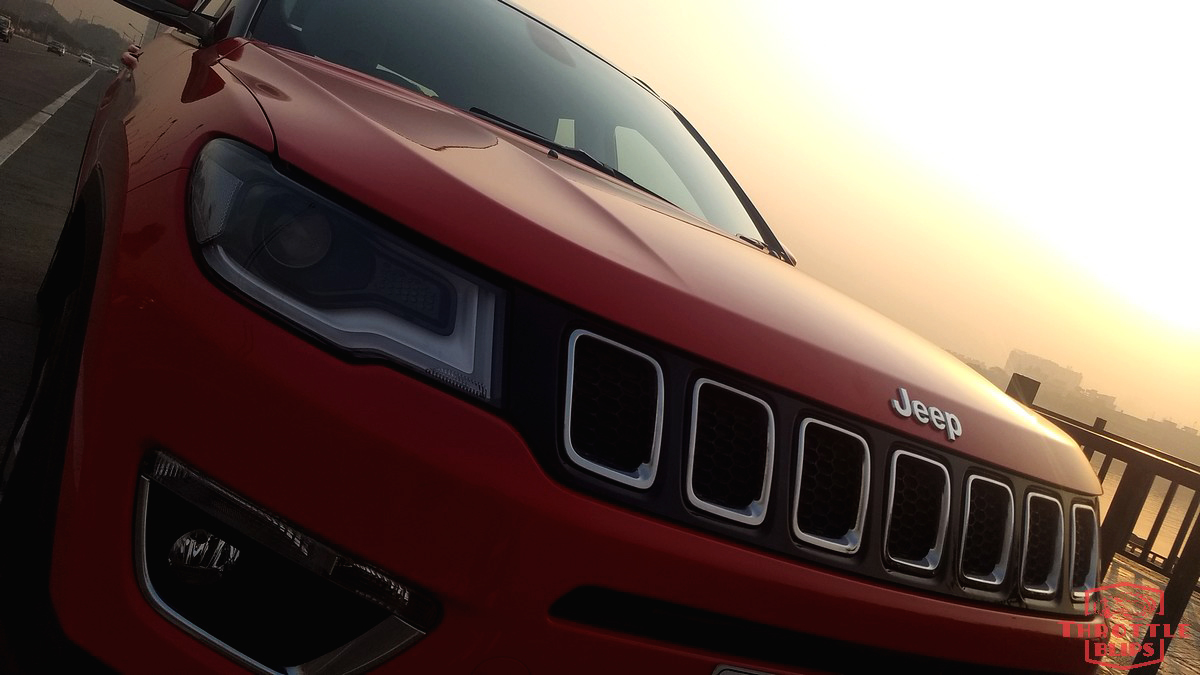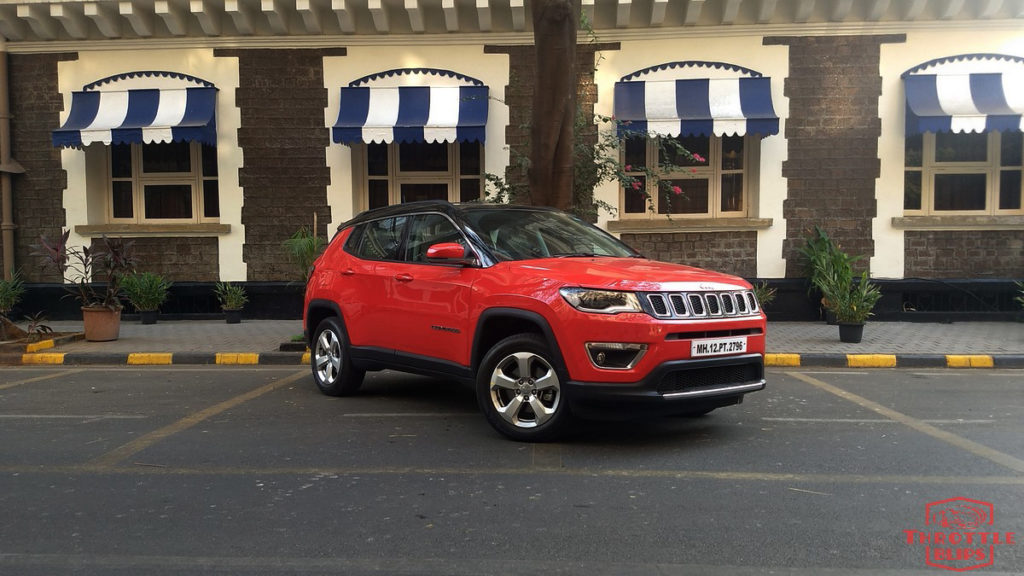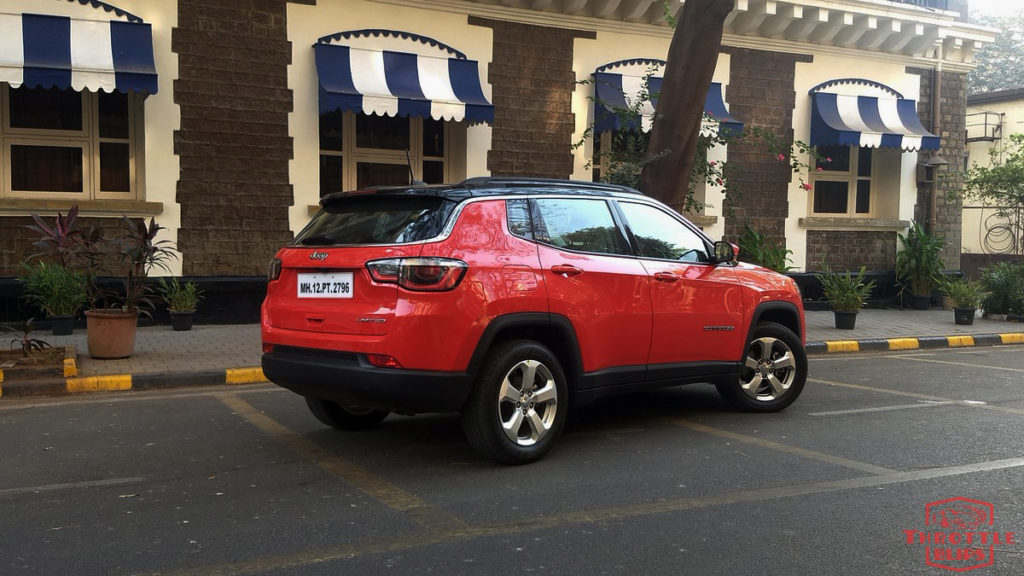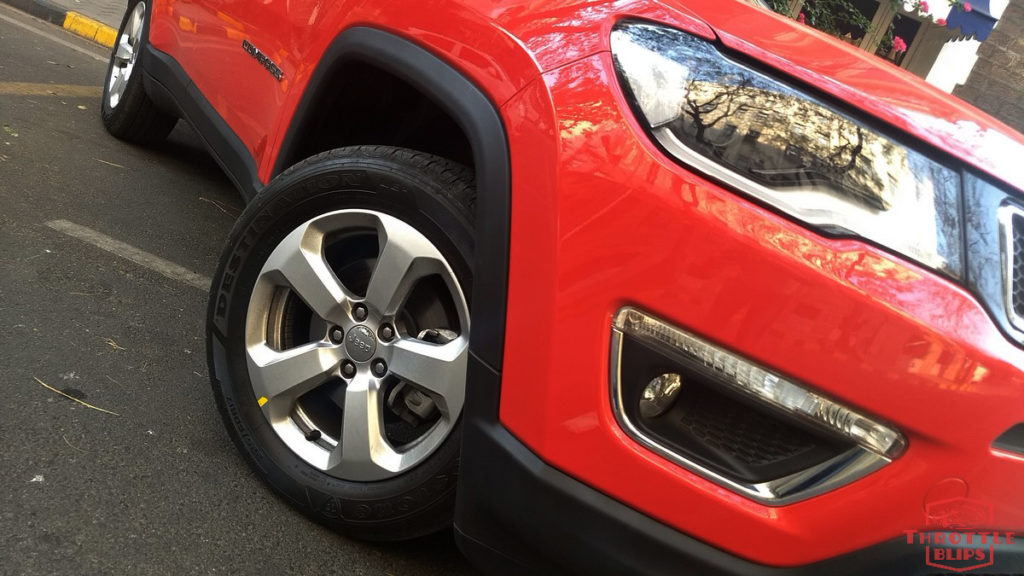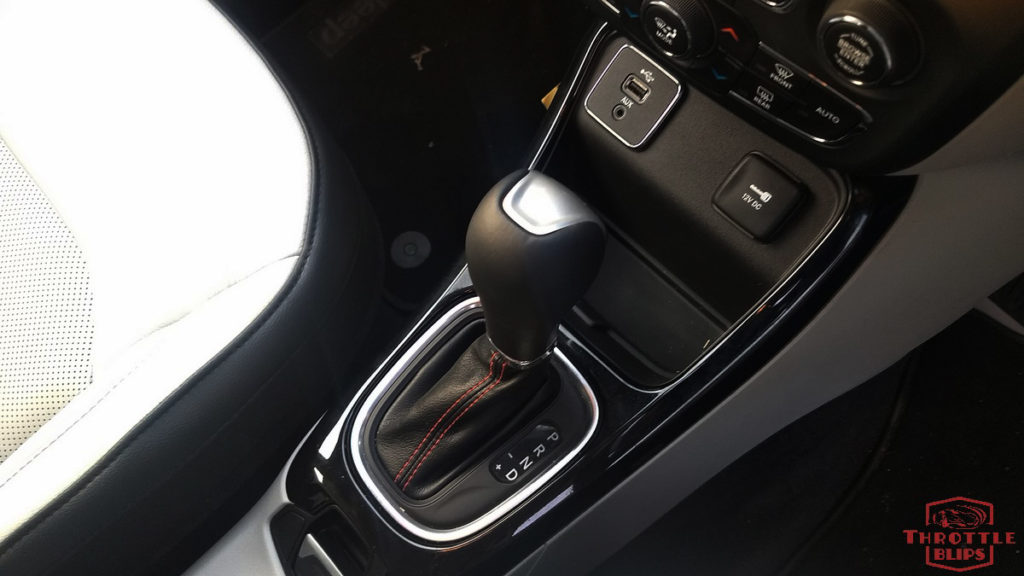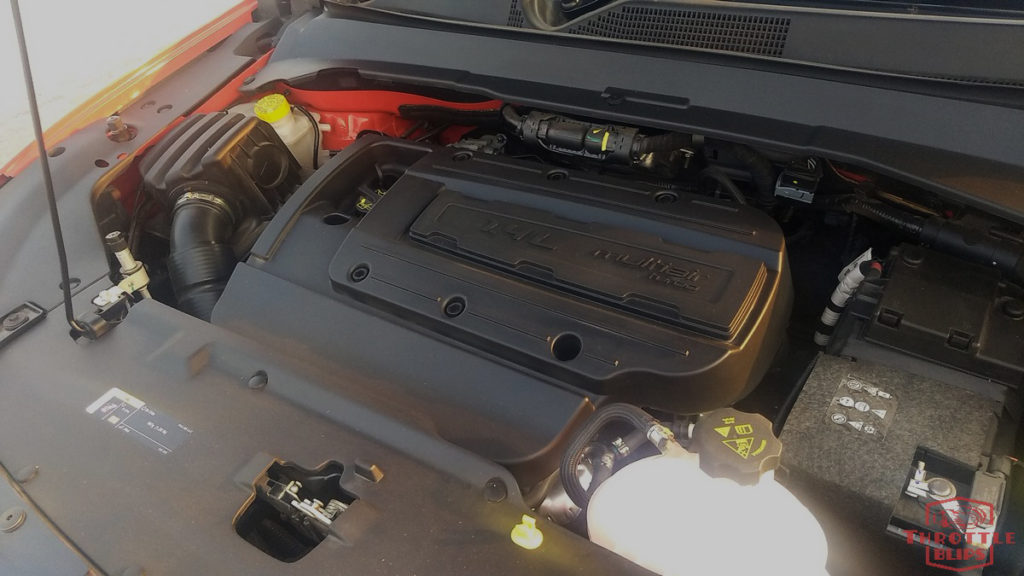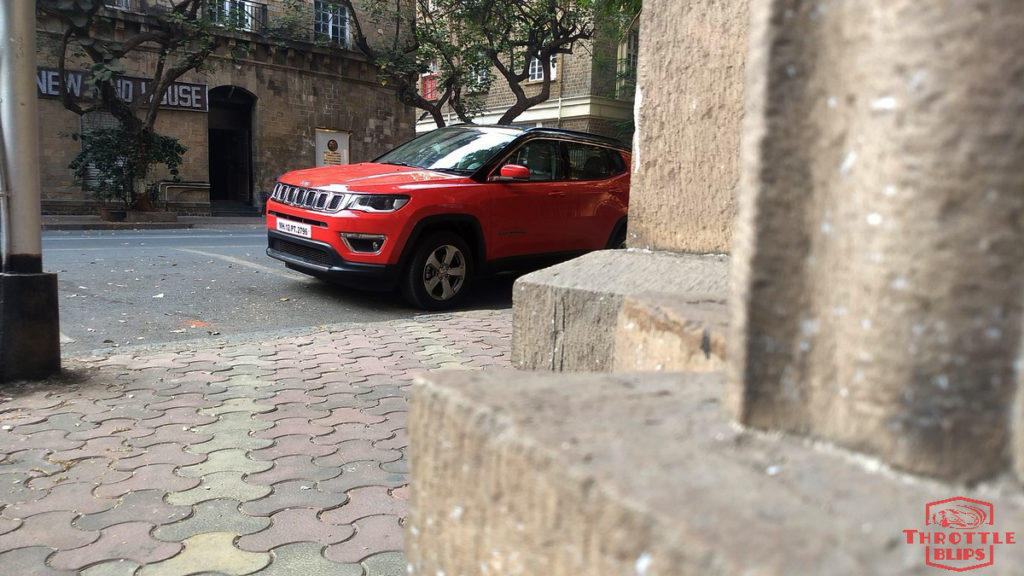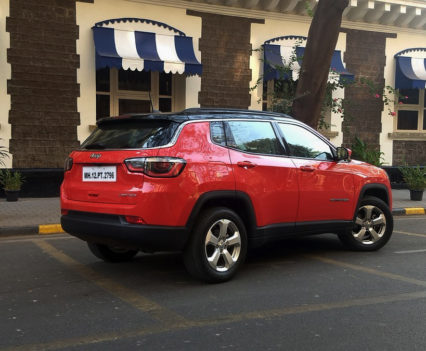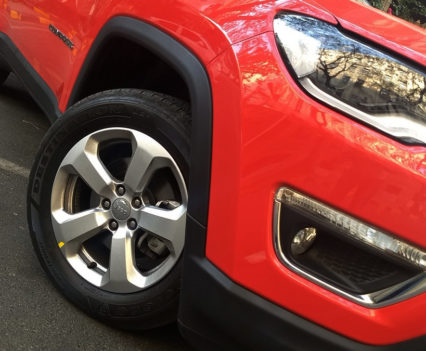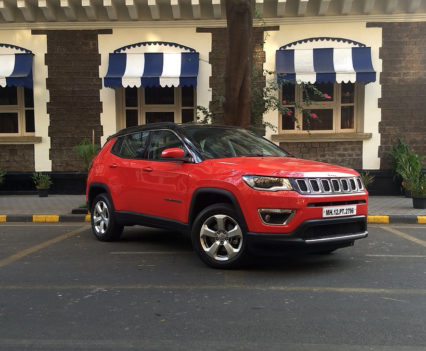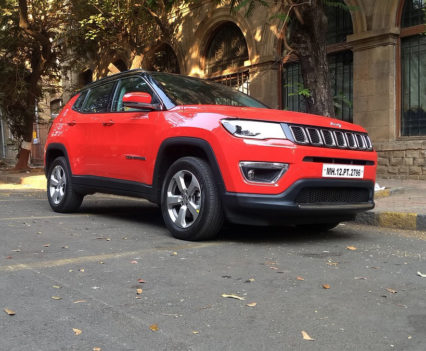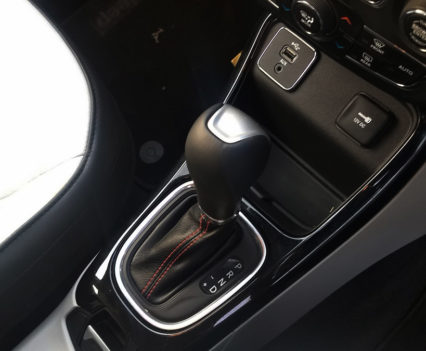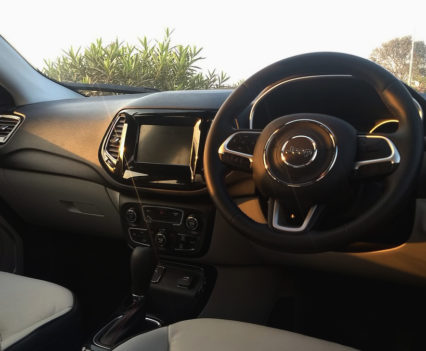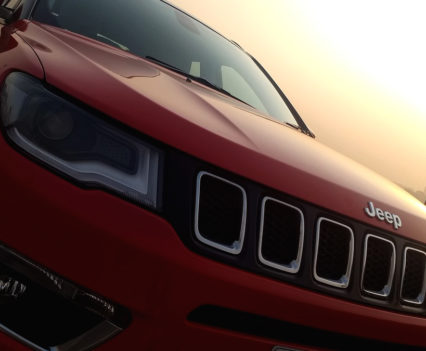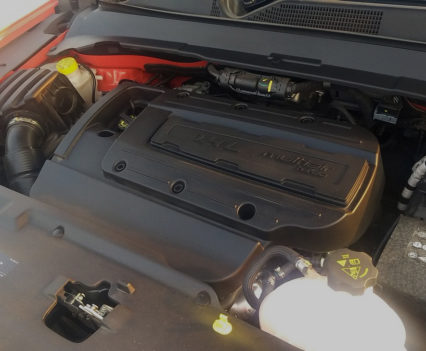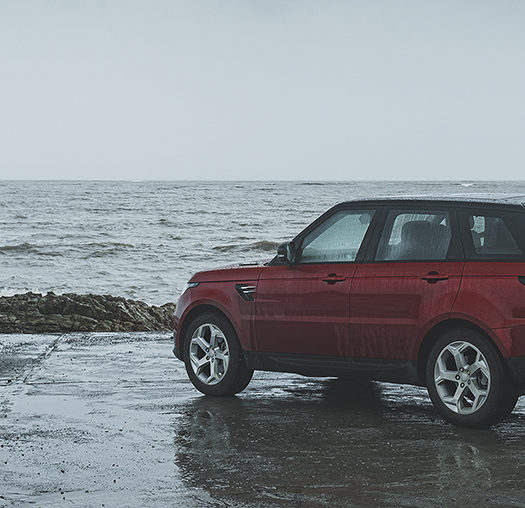The number of Jeep Compass that one can see on the road today itself speaks how successful this SUV has been in the Indian market. After making an official entry on Indian soil in 2016 with a trio of pricey CBU models, Jeep launched the Compass last year with a knock out price, and it took no time for the Indian SUV lover to lap it up. We drove the baby Jeep before the launch came away extremely impressed with what it had to offer. While the Compass we drove came with a 2.0 litre diesel heart and a manual gearbox, deliveries of the petrol variant began in October 2017. We loved the diesel Compass (read the Compass diesel review here) which has a fabulous engine and brilliant drivability so, how does the petrol fare in comparison? Read on to know.
The Jeep Compass petrol is offered only as a front wheel drive. The entry level Sport variant comes with a six speed manual gearbox while the Limited and Limited (O) models come with an automatic transmission only. There is no Longitude trim available in the petrol model range. On the exterior, both the diesel and petrol models are identical with no badge to distinguish the two. However, the Limited and Limited (O) get the 17 inch alloys which are available on the Longitude diesel model. We actually like this 5 spoke design because it is similar to that on the Grand Cherokee. On the inside, the noticeable differences are a new tachometer with a 6,750 rpm redline, the autobox gear lever and a storage space in the centre due to the absence of the 4×4 selector controls.
The Compass petrol comes with a 1.4 litre Multiair turbo charged unit that puts out 163 horses and 250 Nm of torque. These figures are lower than that of the diesel that stand at 173 horsepower and 350 Nm. Starting off, there is prominent turbo lag up to 2200 rpm after which there is a sudden surge of power and the Compass just shoots forward. This translates to a strong mid range that’s holds till the higher 6,000 rpm mark. The motor however does tend to get noisy once it crosses 4000 revs. The engine revs freely though, and the mid range power does tend to put a smile on your face. However, power spike produces an amount of torque steer, that can catch you unaware.
The 1.4 Multiair comes mated to a seven speed dual clutch gearbox that has seamless shifts when driven in normal urban city conditions. It however does get confused at times and takes a moment to react when engaging D or R from neutral. There is also a delay to react when performing a downshift. The gearbox comes with a manual mode that holds revs in every gear but there is no sport mode or paddle shifters either. The transmission performs its best when driven in a relaxed manner.
Coming to the suspension and ride quality, we have said it before and we will say it again. The Compass just reigns supreme in this department. This Jeep just makes short work of everything you throw at it. It simply glides over rough roads, undulations and broken patches. The Compass feels eager going into corners and body roll is not noticeable. The steering is well weighted and confident as well.
The Compass petrol should be on the radar for someone looking for a petrol SUV as a daily driver. The 1.4 Multiair offers adequate performance and mated to the automatic gearbox makes for a good combination. However, the seven speed automatic could have better response and the lag in initial rpms is a bit of a downer. So unless its petrol and automatic transmission that you really want, our pick would still be the fantastic Compass diesel.

